Cardamom Espresso gelato
Coffee counts as one of the classic Italian gelato flavours. But could a recipe otherwise mainly based on milk, sugar and a single whipped egg white for stabilisation really work out well? I, for one, was not convinced. To my immense surprise, however, the ice cream turned out to be one of the nicest coffee-flavoured ice creams I’ve enjoyed in a very long time.

Coffee – prepared in ways ranging from the seductively smooth and well-rounded to the coarse and bitter, the aromatic beans are the foundation for one of the most popular drinks on earth. And for one of the truly classic ice cream flavours.
Me and coffee-flavoured ice creams have a somewhat troubled past. Against that background, I am very happy to finally share a delicate espresso gelato recipe I have come across. I found it in Adriano di Petrillo’s book “Gelato”, and in many ways, this recipe comes very close to my ideal coffee flavour.
However, I must admit that my first feeling after reading the recipe was not that of fascination but of … scepticism. Sure, I know that egg whites (just like their more ‘famous’ siblings the egg yolks) have a stabilising power of their own. But how on earth would one single egg white be able to hold together a whole ice cream base that mostly consisted of milk and virtually no solids?! Still, di Petrillo’s credentials inspired confidence and most of the recipes in the book used (more or less) the same base. So, one day when I felt the urge for frozen caffeine, I decided to put my misgivings aside and give the espresso recipe a try!
In case you have wondered, I usually try to spare you … well, less impressive recipes. Just ask my oldest daughter what she thought about my red bean ice cream, and she will tell you that it is top of her list of “father’s worst ice creams”.
I will gladly acknowledge that the red bean ice cream needs some further work, and (to a much lesser degree, but still) this also applies to several coffee ice creams. Going by the book(s), I have by now immersed quite a lot of crushed coffee beans in ice cream bases, and most of the times, the results have never really turned out the way I hoped for. Since coffee drinkers luckily all have their own preferences, the batches have still actually been enjoyed by some testers. Sadly, however, I’ve never been able to share in the enthusiasm. Perhaps because my own coffee ideal leans more towards “smooth, well-rounded and inviting” than “coarse, burnt and hostile”. This might also explain why I was quite pleased to note that the present recipe did not call for any infusion, but rather the straightforward addition of already prepared espresso.
The recipe
When first trying out the recipe, I found a certain mismatch between the written text and the cold realities: try whisking a single egg white with all the sugar of the recipe, and I’ll assure you that there will be no “soft peaks forming”. Instead, you will end up with something closer to cake frosting in texture. I’d suggest that you whip the egg white first, then whisk in the sugar if you want to see some peaks forming at all. But, as already Shakespeare noted, all’s well that ends well.
Overall, the recipe is easy and straightforward. Instead of combining most things into a hot custard base, the dairy is the only part that ever is heated – on its own. It is then to be cooled/chilled down before being combined with the rest of the ingredients.
Note, however, that this does leave the egg white raw: Those who prefer to stay clear of raw, unpasteurised eggs, and those who should stay clear of them – the elderly, the very young and expecting mothers – are hereby warned. One way around this is of course to prepare a “safe” Italian meringue (also composed of egg whites and sugar) or equally safe and vegan aquafaba meringue and use that instead!
The recipe calls for ‘ready-made’ espresso to be added (cold) to the ice cream base just before the churning. This gives room for some choice. As you probably know, espresso is not a special coffee but rather a special way of preparing coffee. If you have the equipment, you could steam-brew your own. Or you could head out to a bar or coffee shop and order a take-away double espresso.
Myself, I resorted to making myself an extra strong cup of espresso using instant (!) espresso coffee. This is admittedly less fancy than steaming away with a dedicated espresso machine but is clearly easier and less expensive. And – most importantly – it worked perfectly!
And since I like a touch of cardamom in my coffee, I decided to add a little to my brew. You would not need much – adding about 1/4 teaspoon or so of ground cardamom should be sufficient for a noticeable hint.
The gelato
Right after the churning, I was ready to dismiss Mr di Petrillo’s base: the ice cream seemed to “too wet and thin” to be recommendable. I threw the ice cream into the freezer.
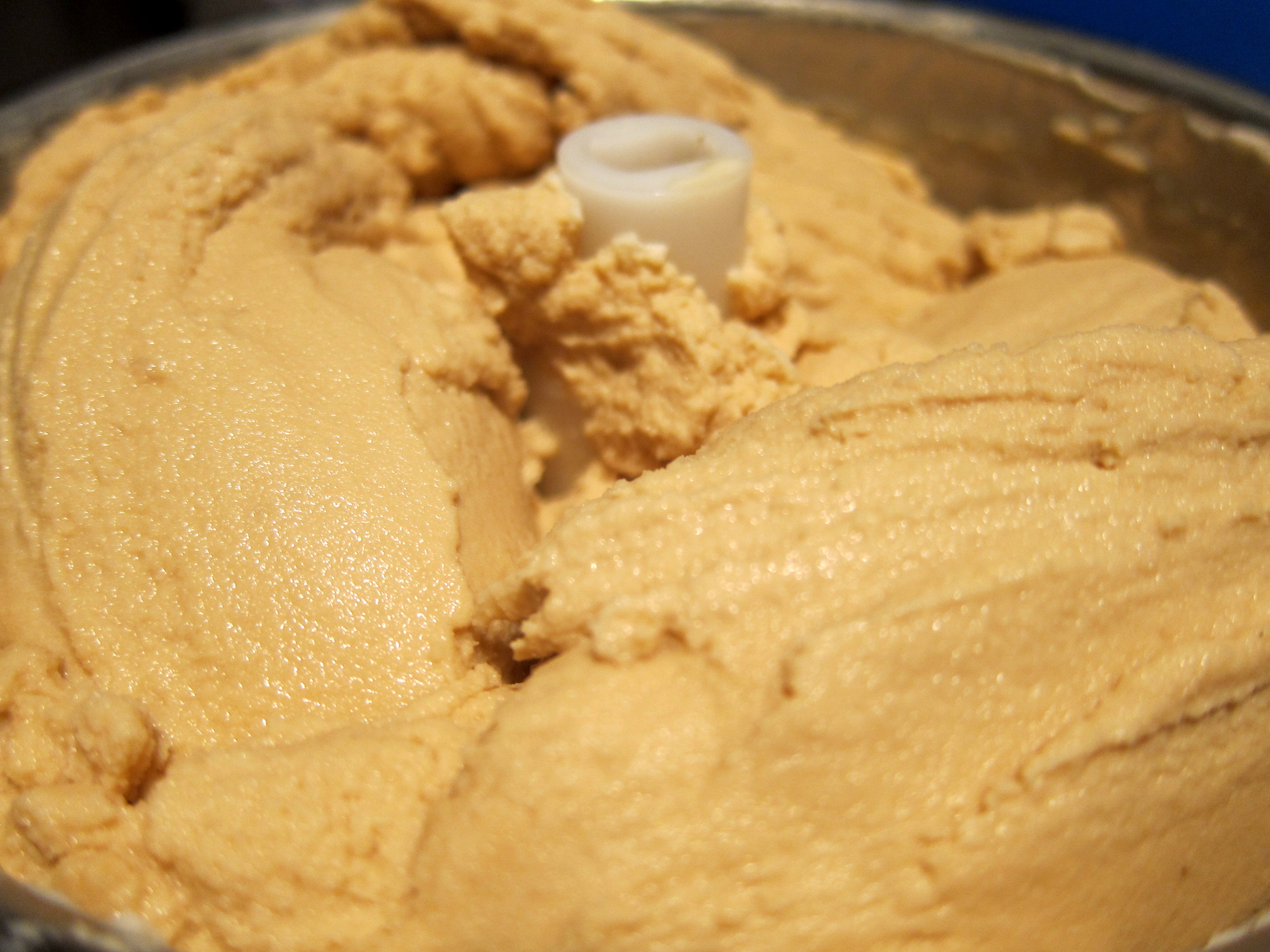
Perhaps this freshly churned, soft and somewhat ‘wet’ gelato comes close to your ideal? If not, follow my advise and let the ice cream freeze a little extra in the freezer.
BUT – when I checked a few hours later, the ice cream had settled in the most satisfactory way!
The flavour seemed to have evolved and had bloomed into a very nice, well-rounded coffee flavour … much like the kind of flavour which I had been hoping for all along! And now, when the ice cream had frozen somewhat more, even the consistency turned out to be great!
Structurally, it was clear that the single egg white (together with the sugar) had accomplished much more than what I had been ready to believe: the scoop-friendly structure was firm yet yielding, evoking a reassuring consistency-feeling similar to the one typically offered by custard-based ice creams. Yet, this is a gelato-type ice cream, and thus comes across as decidedly light, in a positive way. After all, many people (including di Petrillo) believe that good gelato should be so light that one should be able to down a tub without actually feeling full, and there can be no complaints in that regard.
Granted, with so much milk and a single egg white, there is one drawback: the gelato tends to melt rather quickly. Which leads me to the following concluding pieces of advise: Unlike much ice cream which is simply delicious to enjoy fresh and straight out of the ice cream machine, this one actually improves after a couple of extra hours in the freezer. And since it is prone to melt down relatively fast, be sure to return the ice cream to the freezer once you have served the portions (you can always go back for seconds 😉 ).
Now, could I please have another cup of espresso gelato over here?
- 500 ml (2.1 cups) whole milk
- 165 ml (0.7 cup) cream
- 160 ml (almost 0.7 cup) sugar
- 1 tablespoon agave nectar (or similar inverted sugar, like corn- or glucose syrup)
- 1 egg white
- 150 ml (about 0.65 cup) extra strong espresso coffee
- about ¼ teaspoon of grounded cardamom (to be added to the espresso)
- Bring the milk and the cream to the boiling point. Take off from the heat and let the dairy cool down, and preferably also chill, for at least 20 minutes.
- Prepare the coffee and let cool down.
- In a separate bowl, whisk the egg white to the stage of soft peaks, then add the sugar and continue whisking until all is well blended.
- Add the coffee to the egg white-sugar mix, then also add the cooled/chilled dairy and the inverted sugar.
- Whisk it all for another 20 seconds, then churn in your ice cream machine according to instructions (OR still-freeze the ice cream using only your freezer: for good advise on how, see the post on making ice cream without an ice cream machine).

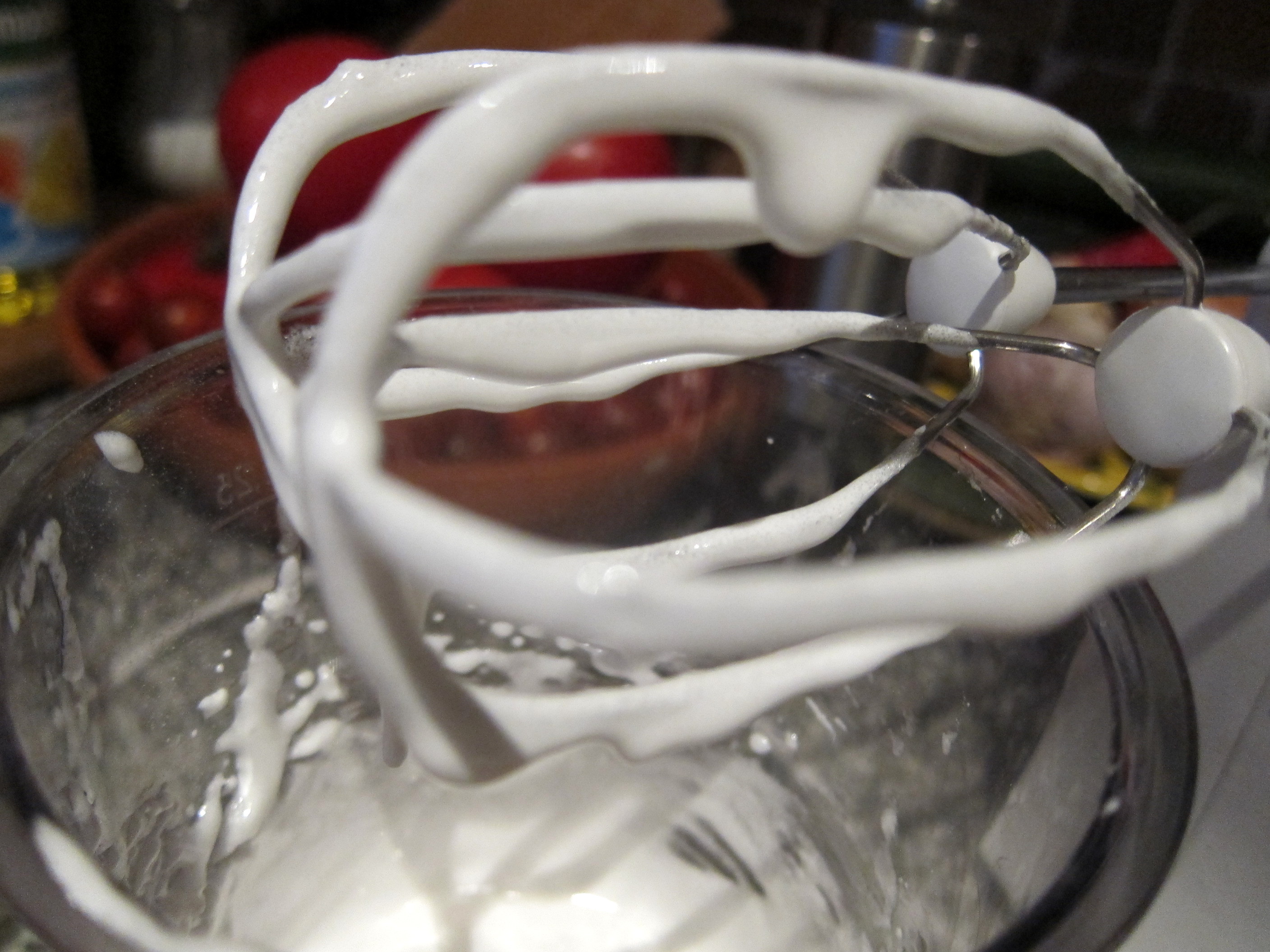
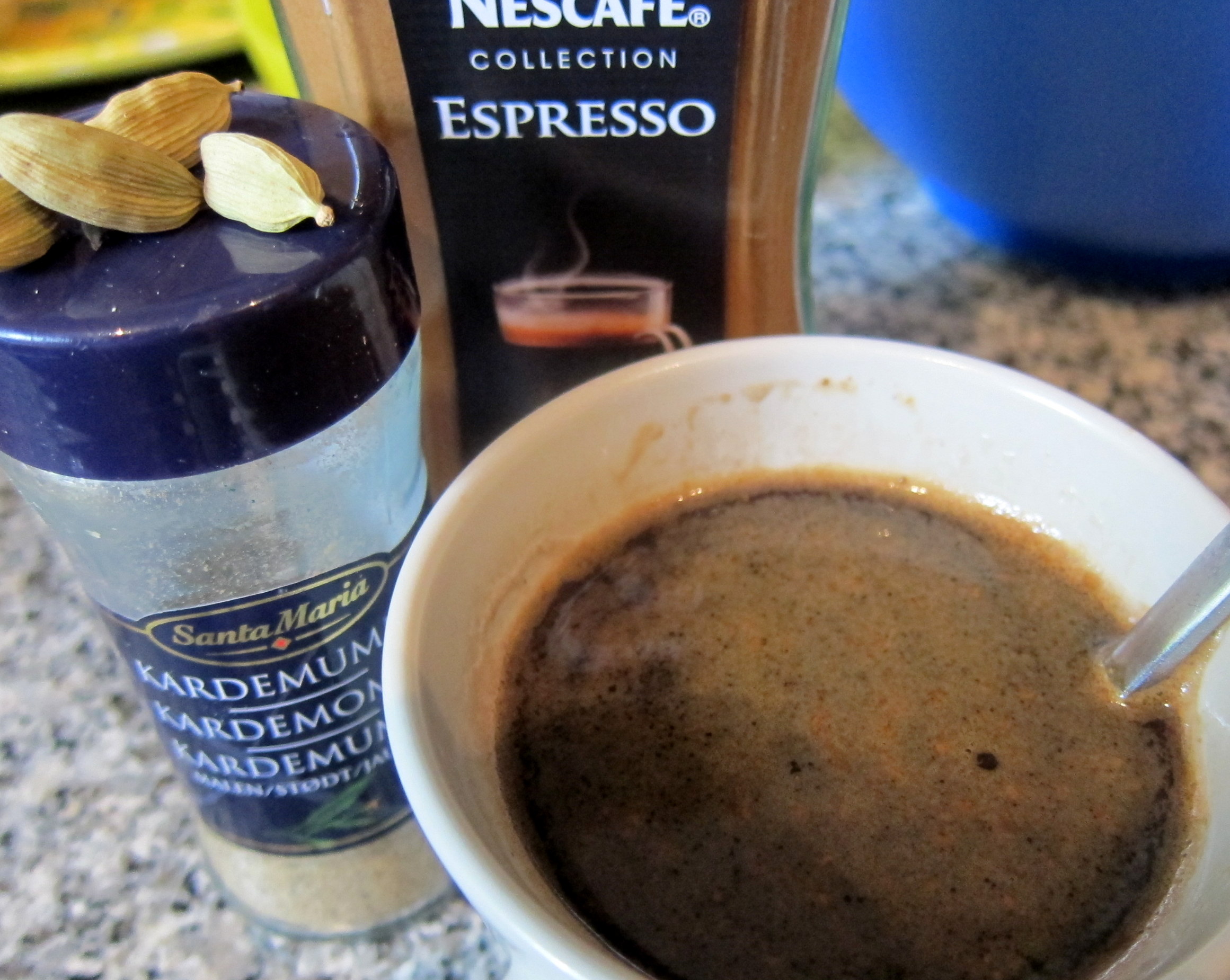
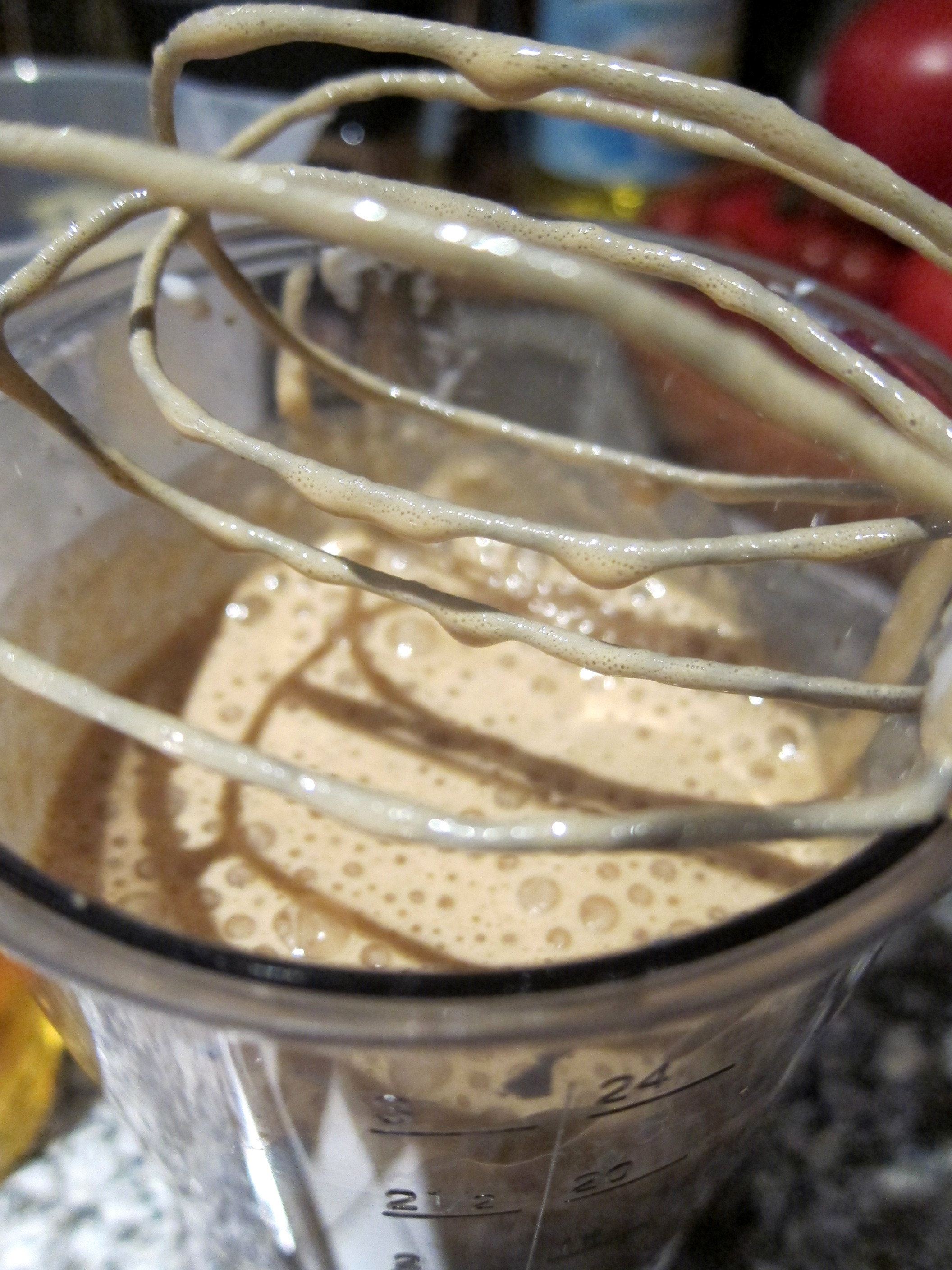
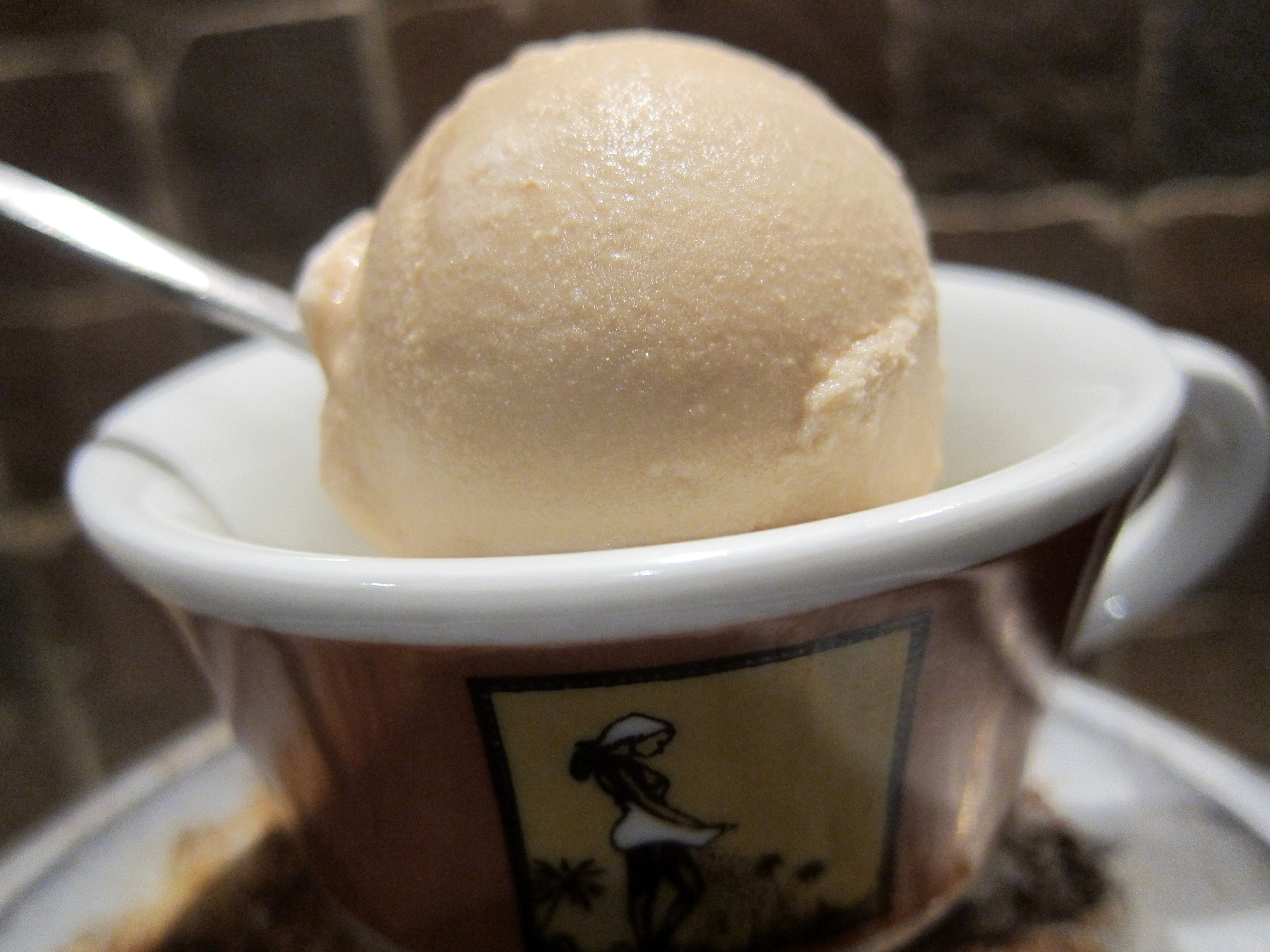


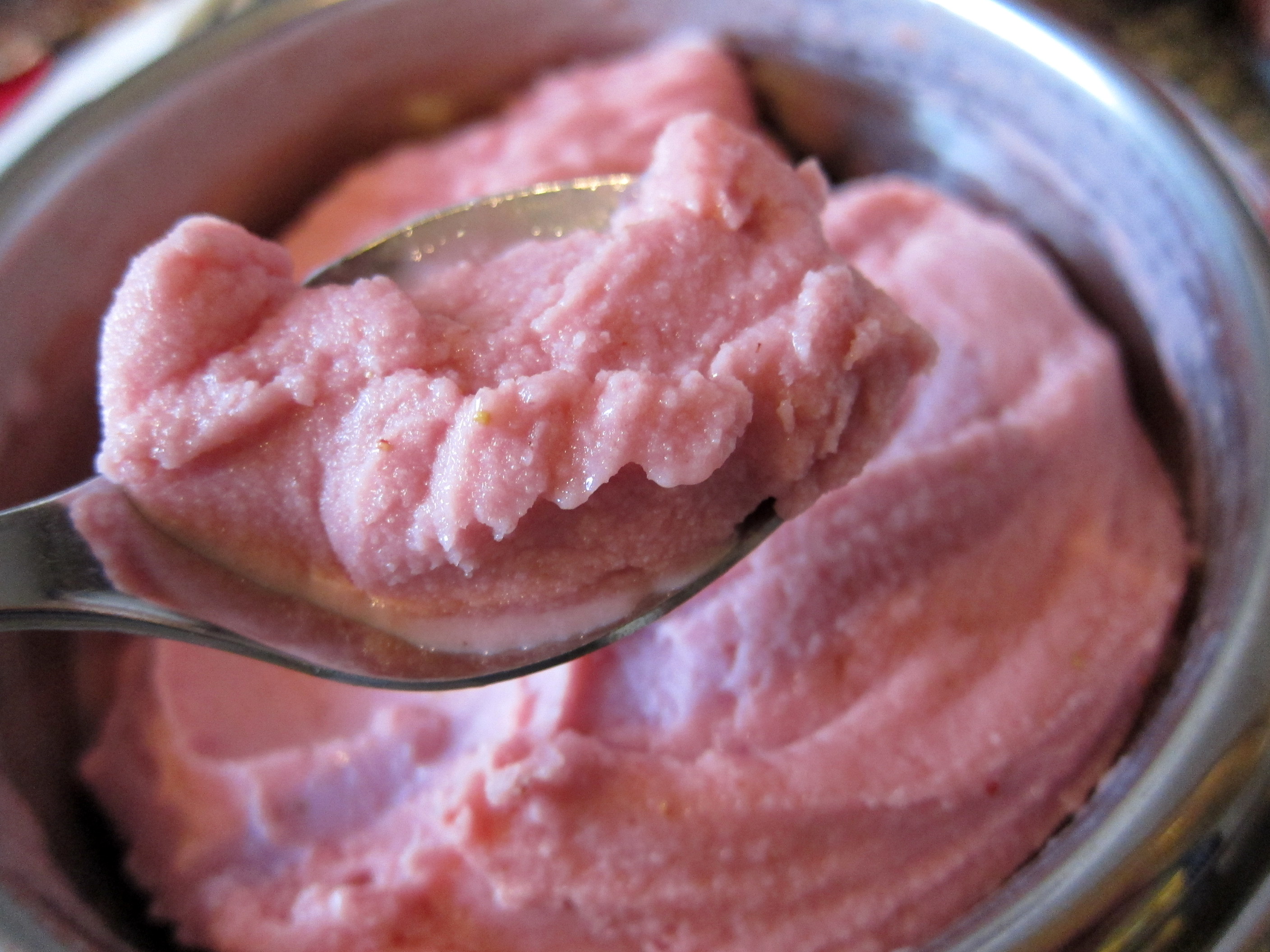
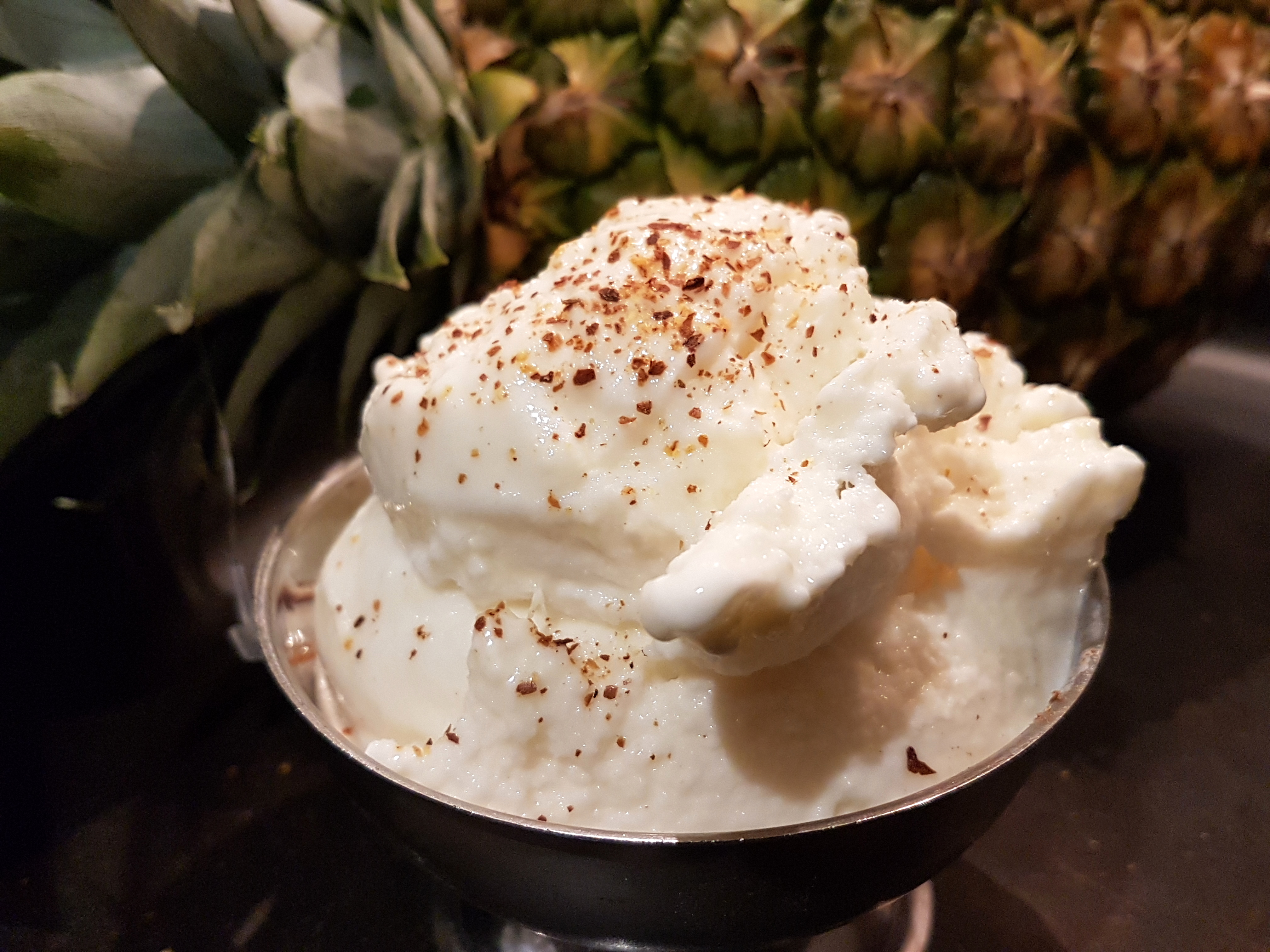


Interesting. I tried adding egg whites into sorbet (thus creating spooms) but didn’t like it. It makes big volume but the fruit flavour is somehow masked. But it is very scoopable. This flavour is very intriguing, so I may give egg whites another chance 🙂
Katerina, you should!
Unlike spoom you don’t really notice the egg white as such here – only its stabilising effect, so to say. And the flavour is really nice 🙂
How could I make almond milk ice cream that would be nice and creamy without putting egg yolk because I have high cholestorol and I have problem with dairy. I can have egg white is their any way u can come up with something that might work that can make a nice texture
Hi Racheli,
Since this post is about a recipe that uses exactly an egg white as stabiliser and gives a “gelato”-like consistency, I take it that you would rather like something that could make for a more “creamy” experience. Unless you would like to go down the road towards more ‘commercial grade’ stabilisers like Xanthan gum (which does give a ‘creamy’ effect … in a rather uncanny way), I would suggest that you look into the ice creams made with starch (Sicilian gelato, Sicilian gelato with arrowroot …), where you then would replace the dairy for almond milk or the like. And/or you could try adding some soy creamer to your almond milk (if that would be hard to find, you could apparently even try to make your own, at least according to this post 🙂 )
Best of luck!
I make pretty good gelato but I still get tiny crystals. Will the egg white help make the gelato have fewer crystals?
Hi Chris,
When ice crystals grow unpleasantly large and noticeable, the number one reason is usually a too long churning/freezing process: the longer it takes for the ice cream to firm up, the bigger the ice crystals will grow. And vice versa: the shorter time it takes to churn your gelato, the smaller the crystals. For that reason, I would suggest that you begin by pondering whether it would be possible to shorten the churning time (for instance, by making sure that the base to be churned is thoroughly chilled before you begin).
Egg whites will mainly help with the consistency and smoothness, notably by keeping air trapped longer within your frozen creation. This might, though, have an indirect effect on the crystallisation, particularly if your gelato is low on solids, so it might be worth a try 🙂